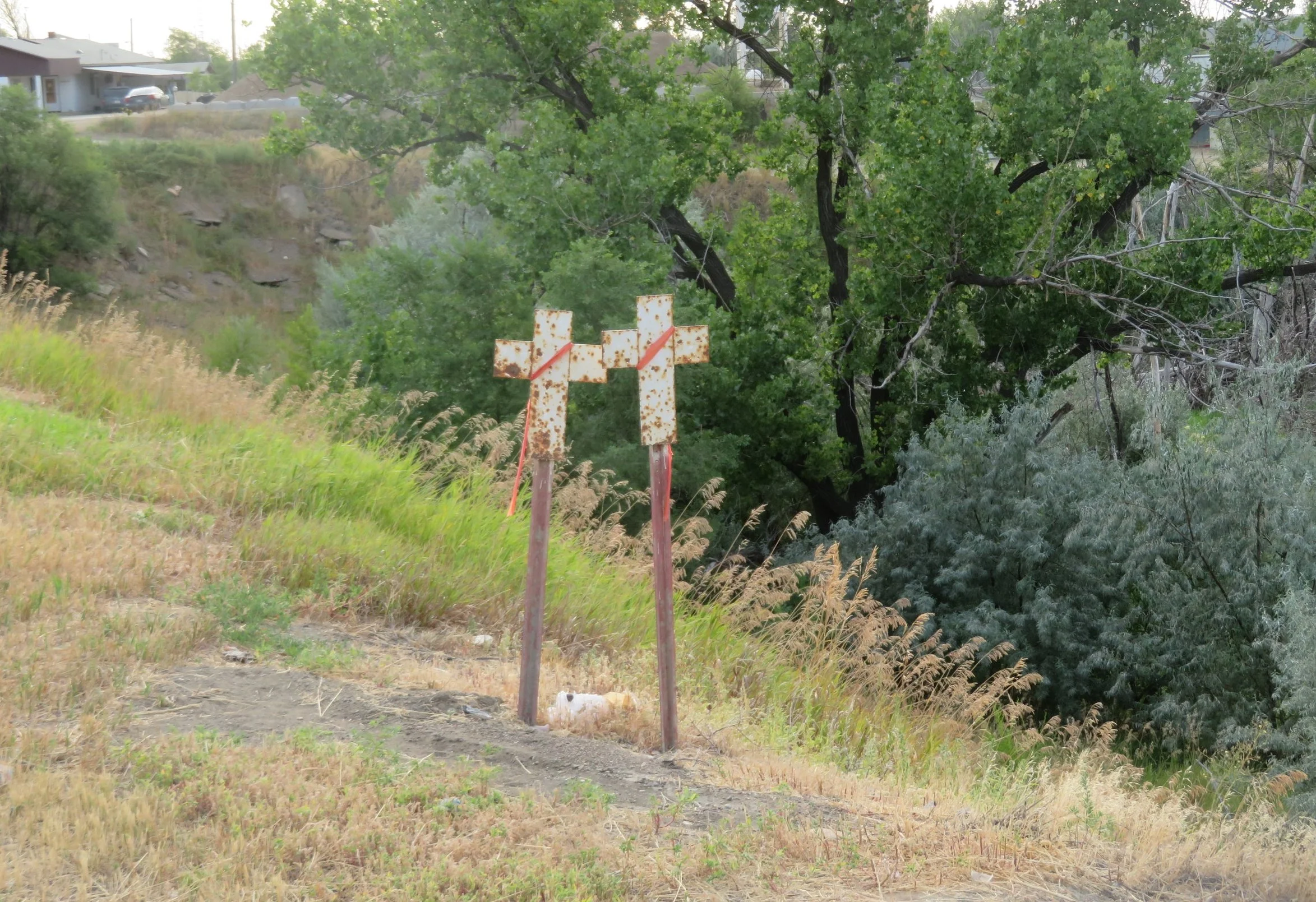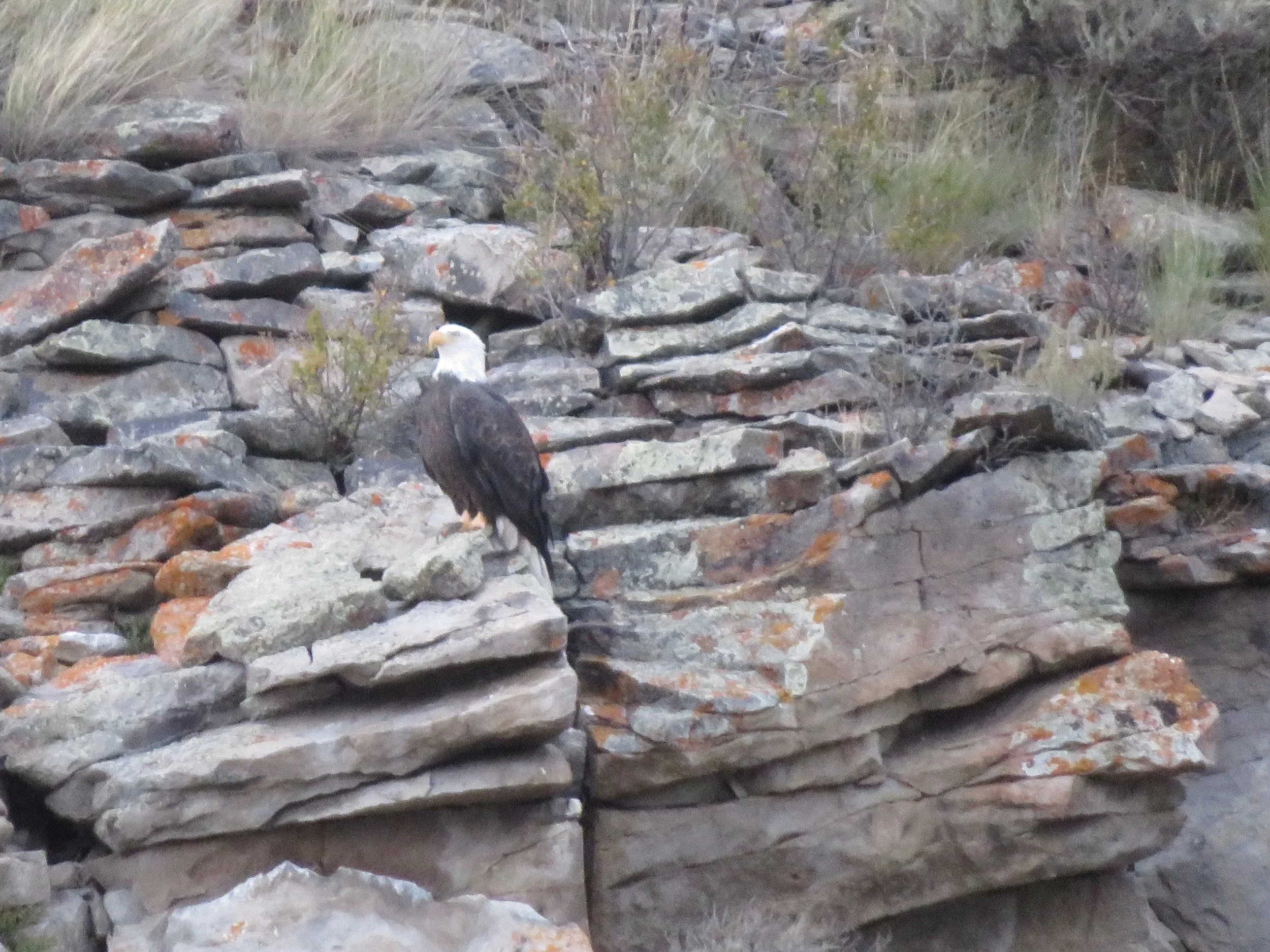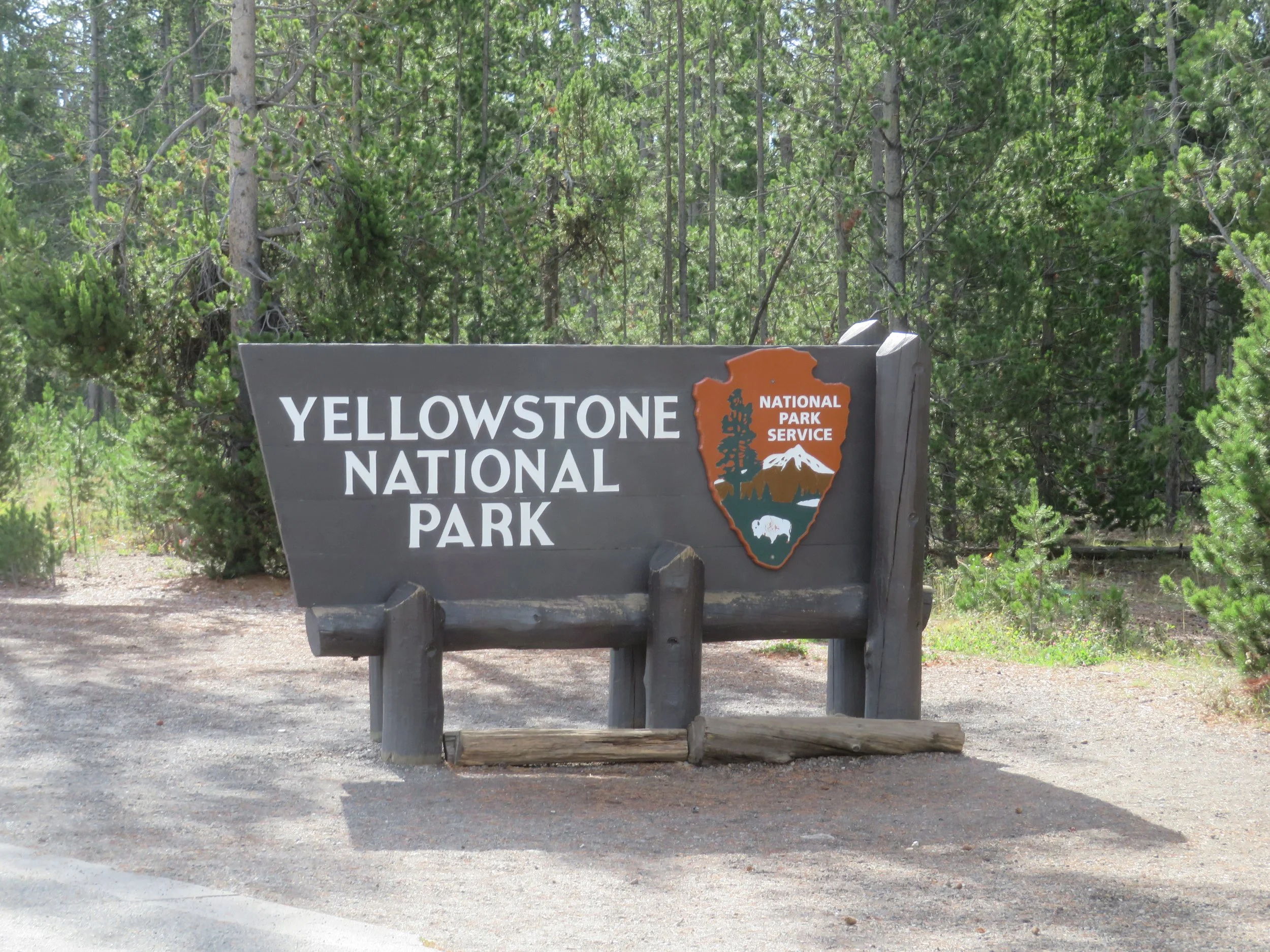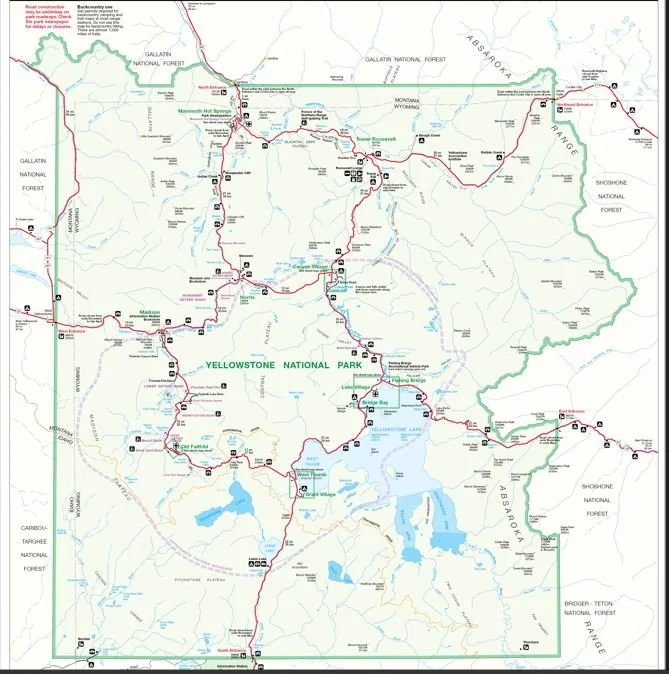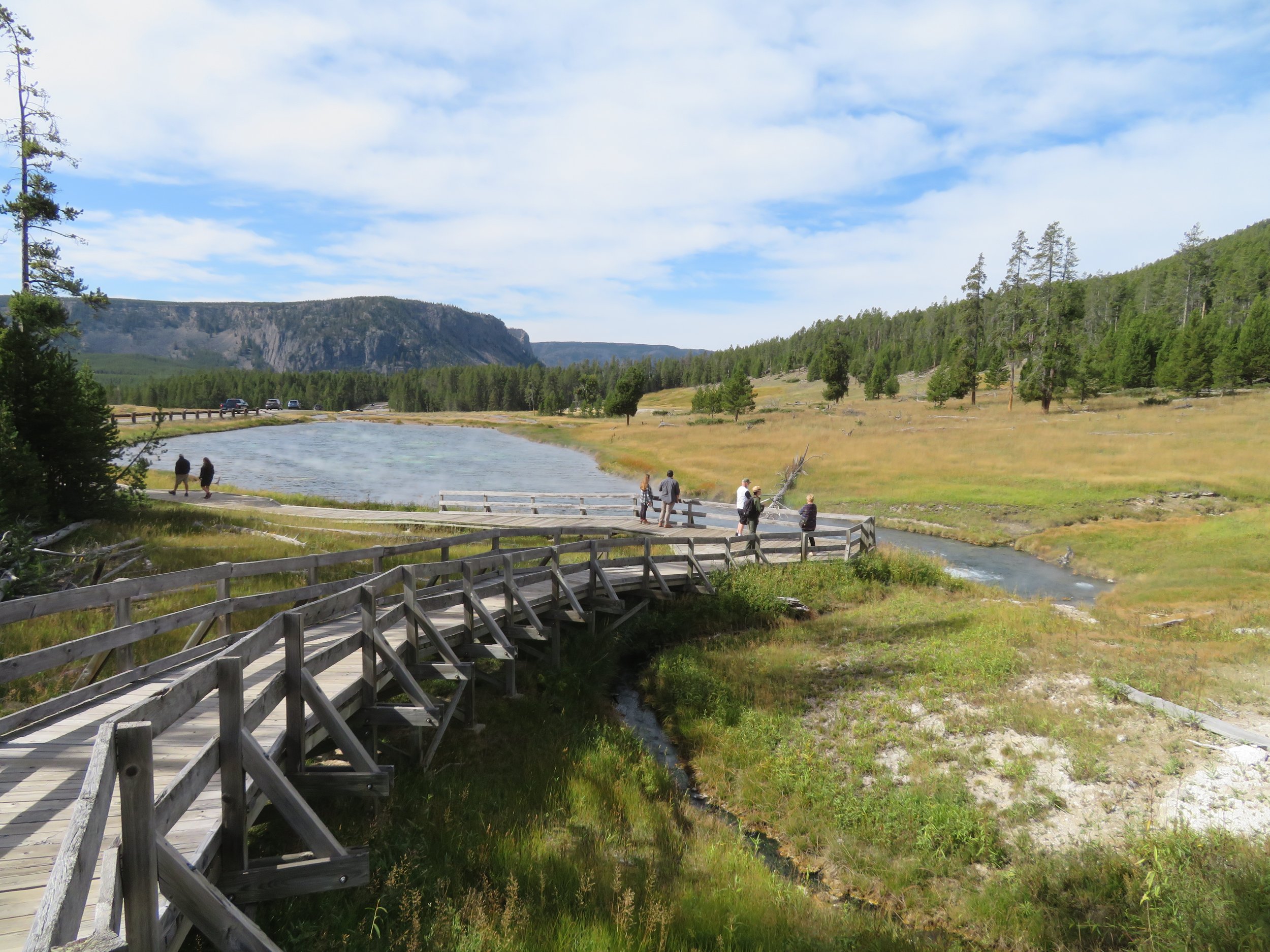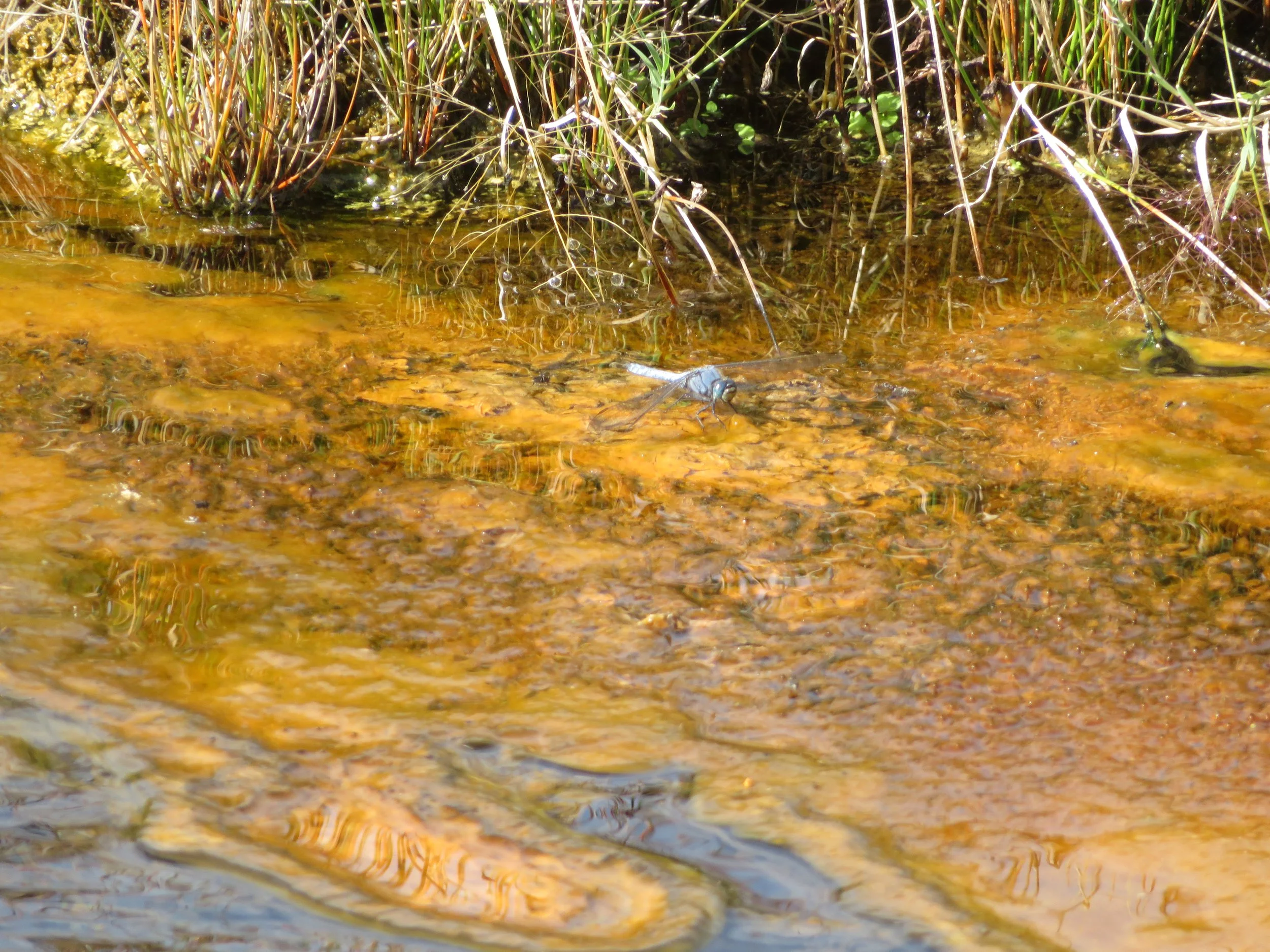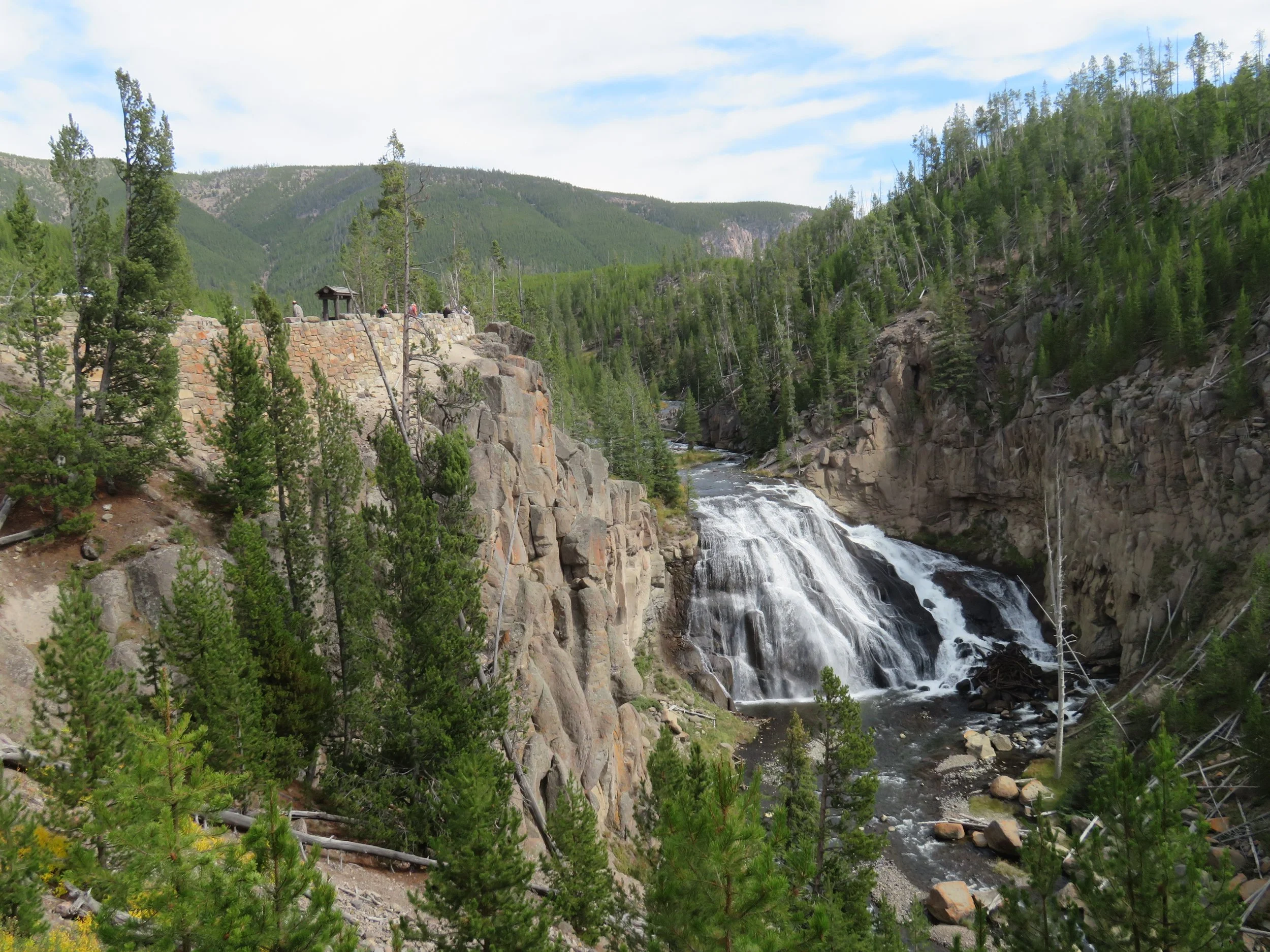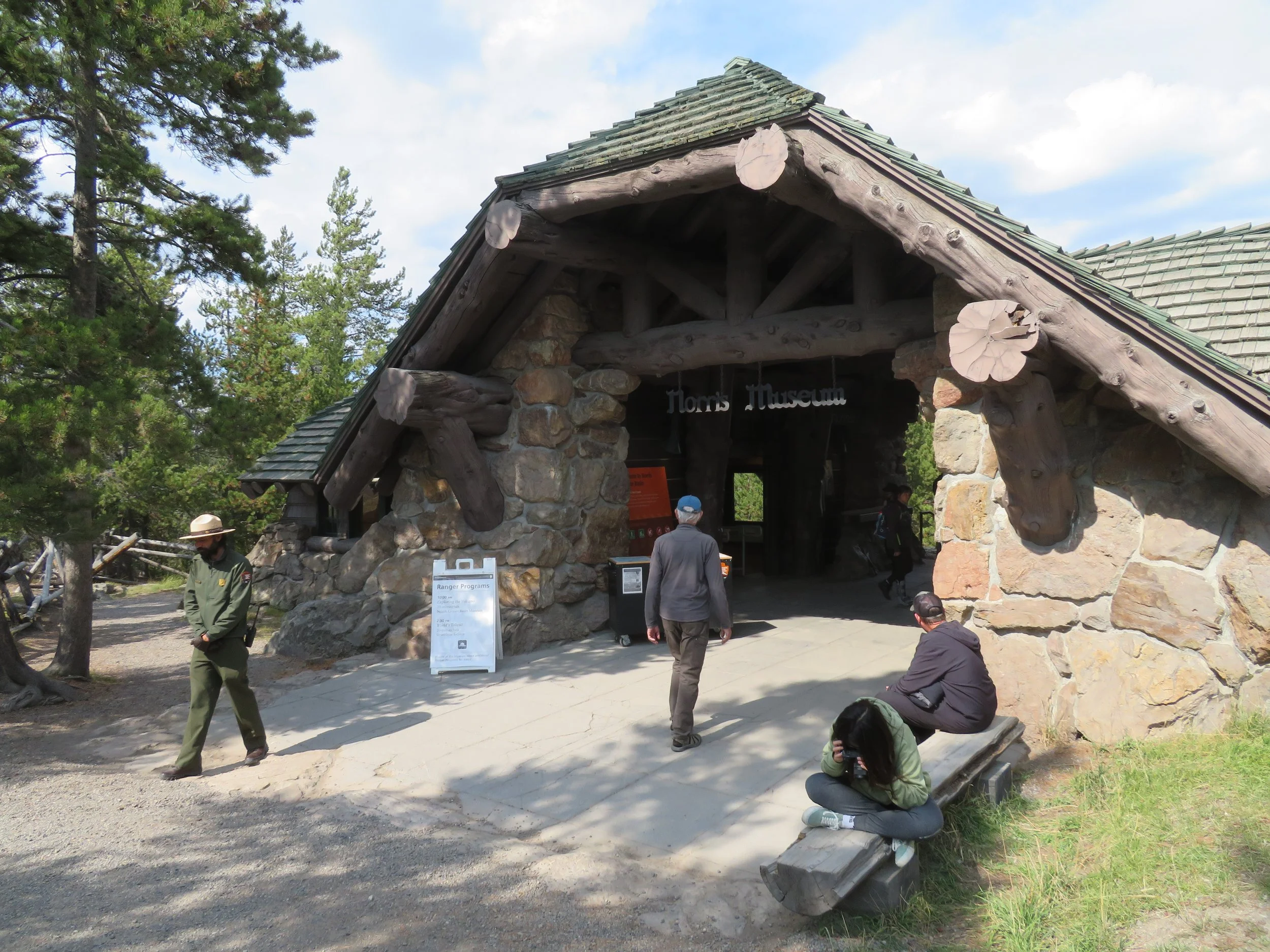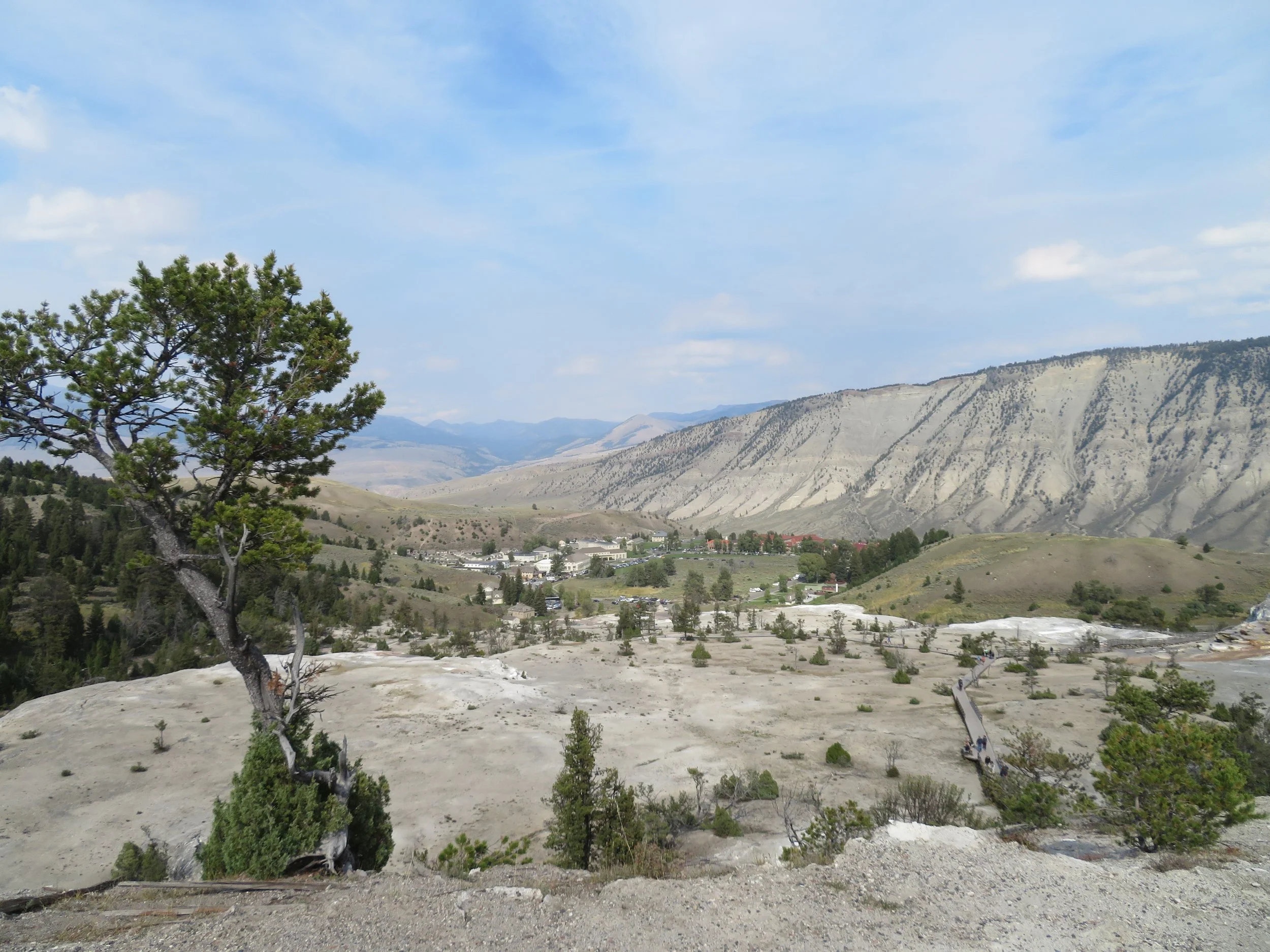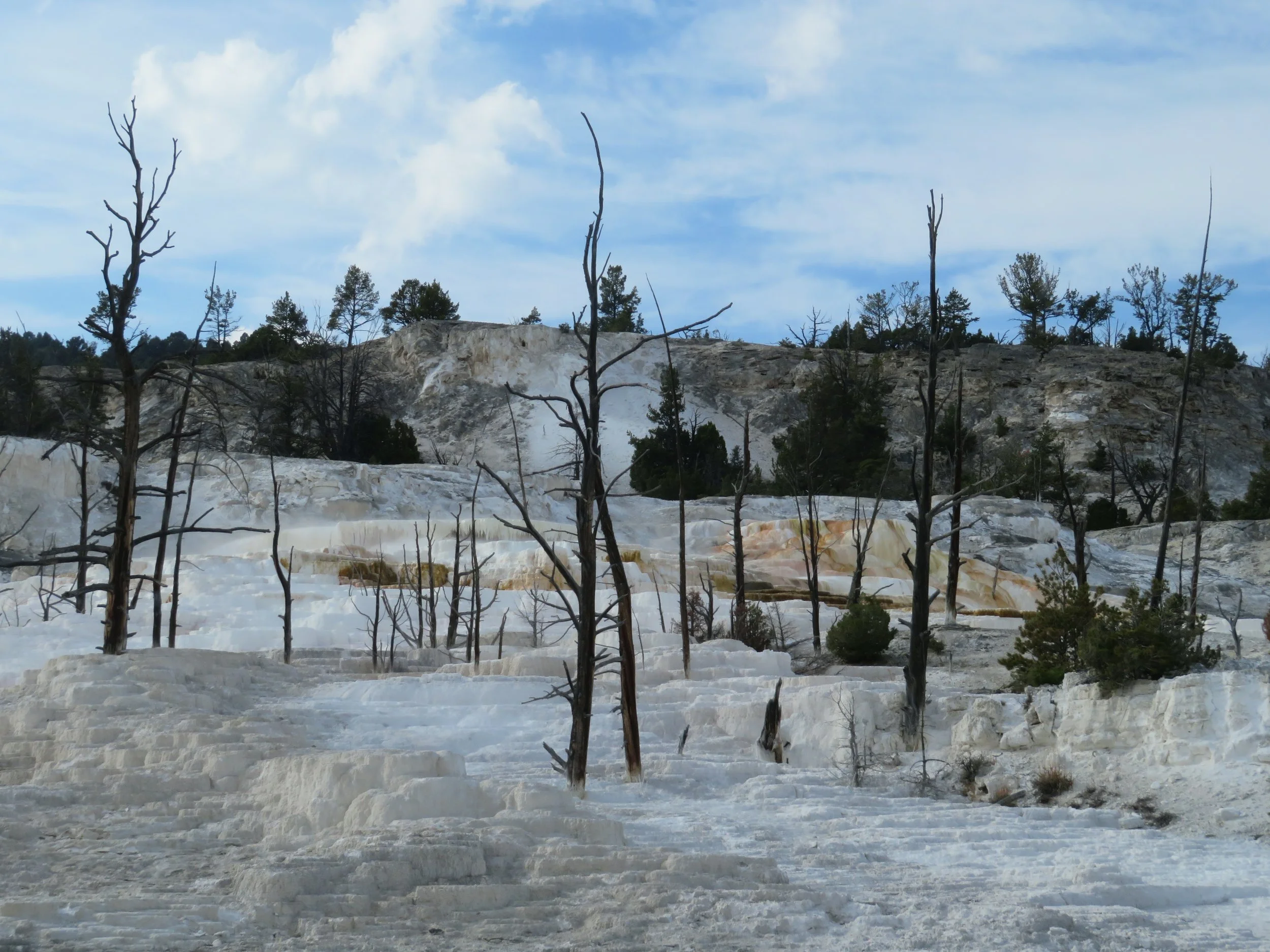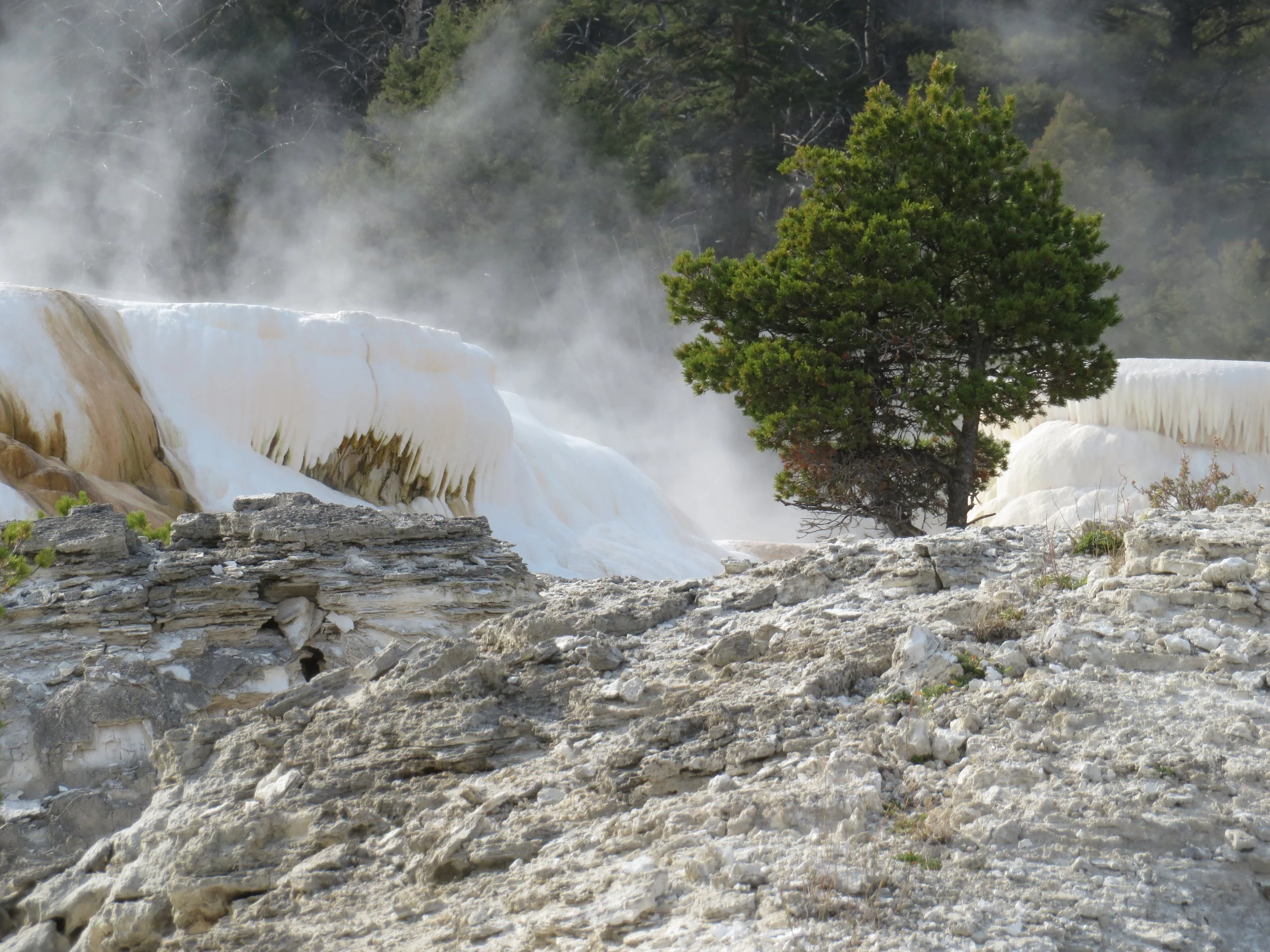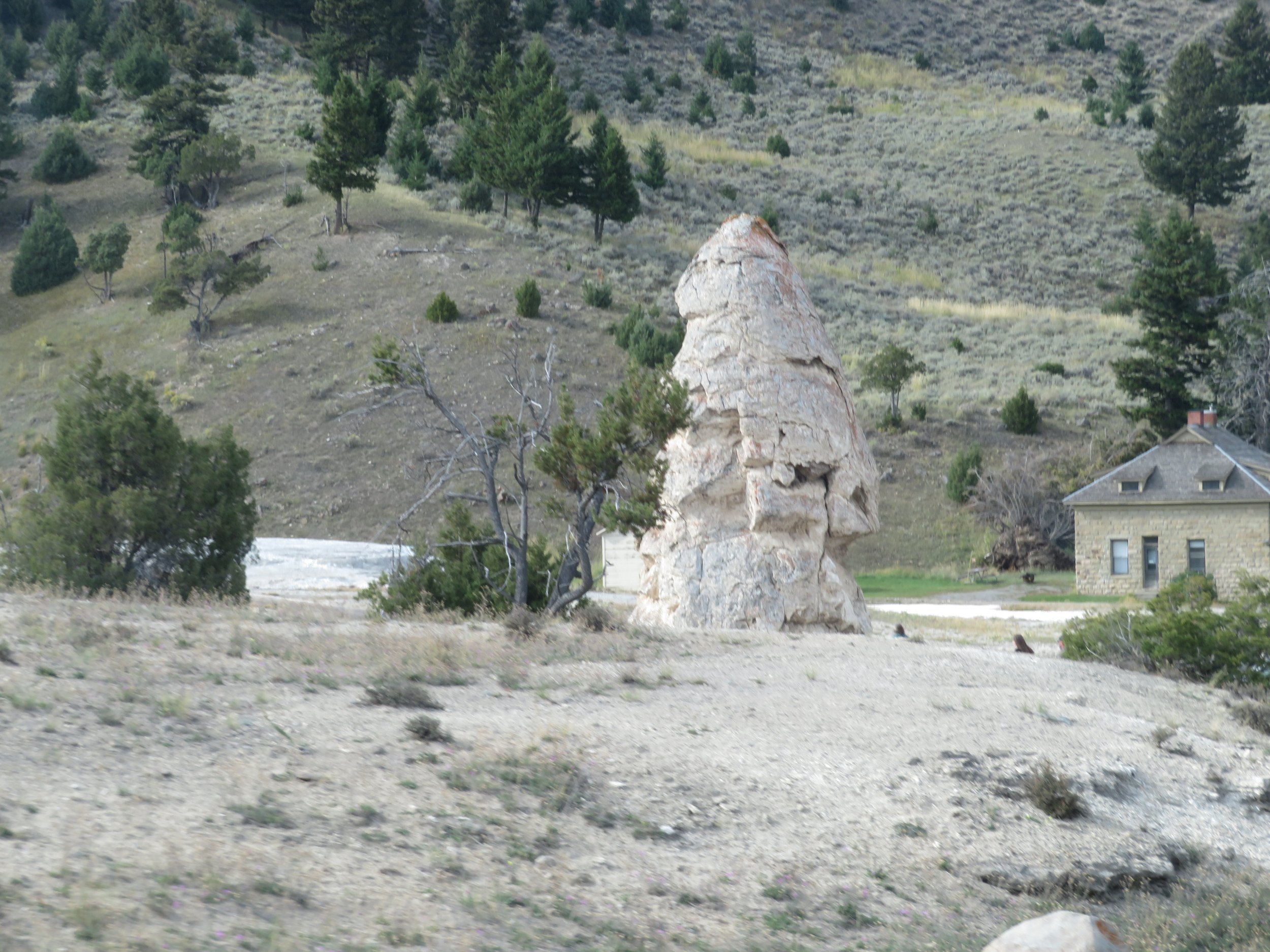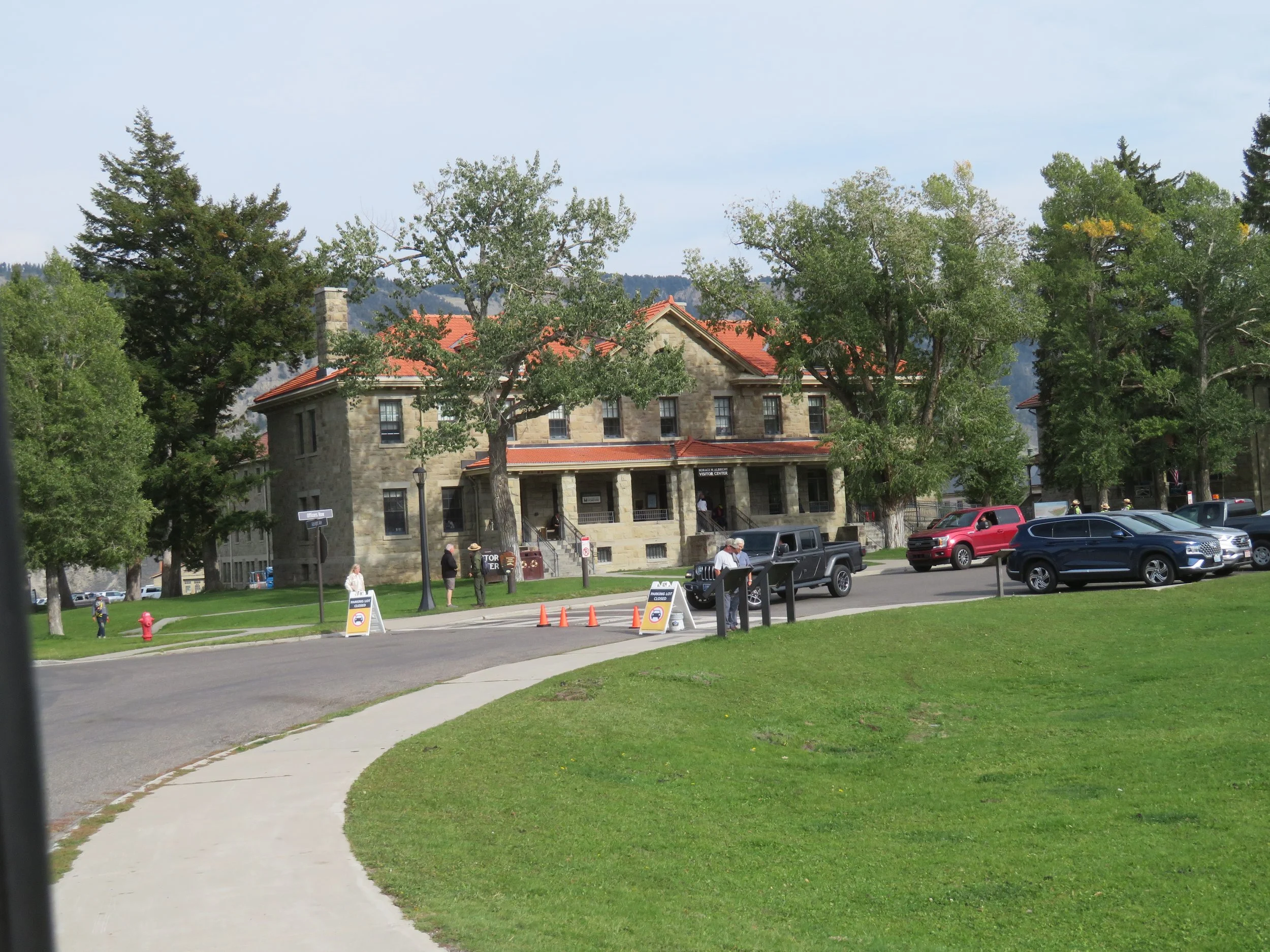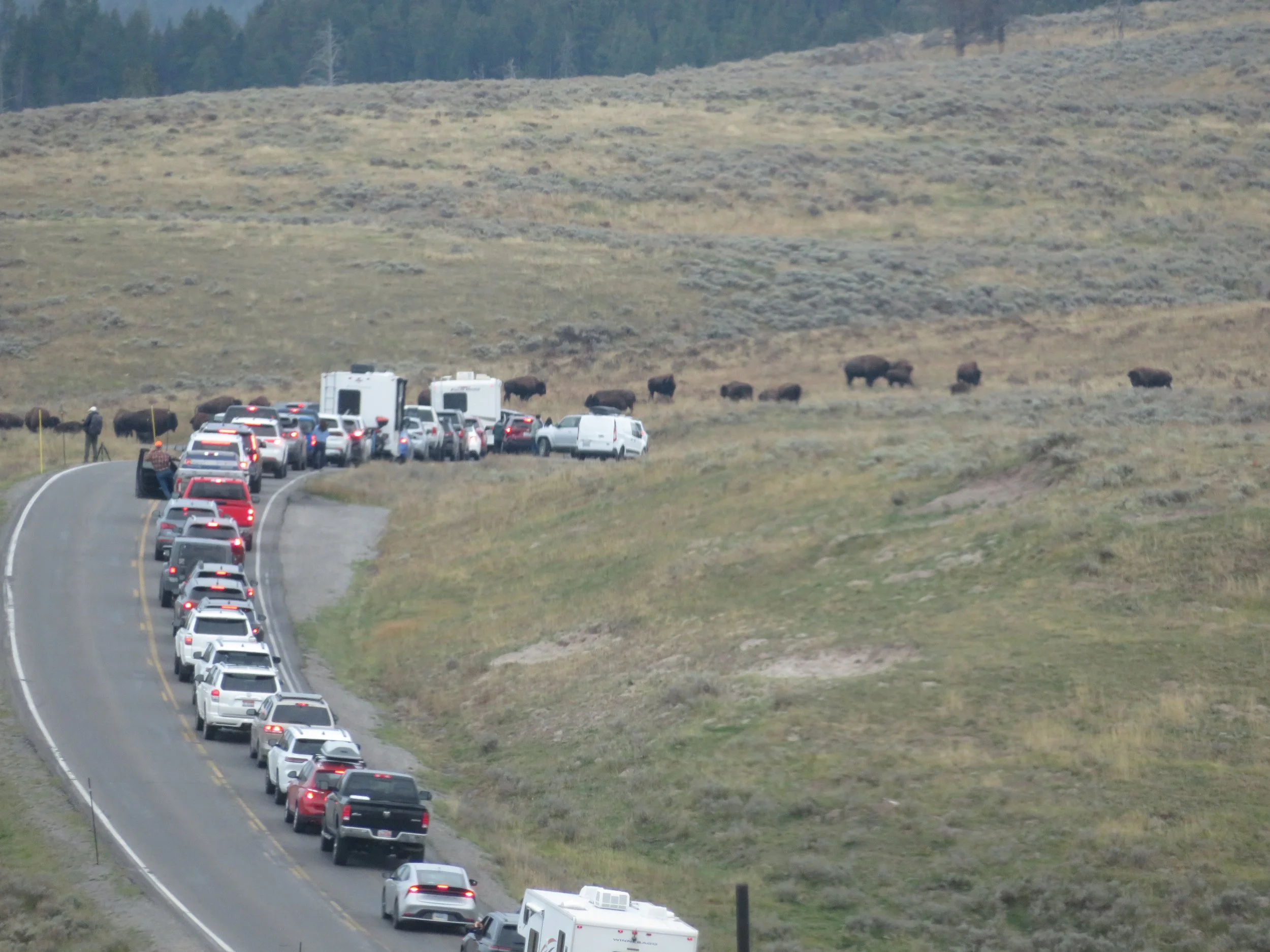From Glacier to Yellowstone
/A hotel night at the Pine Lodge of Whitefish was just what the doctor ordered… not that we needed any doctoring. Hot showers, a comfy king bed, a movie, and take-out Chinese, however, were a lovely change of pace. After a hot hotel breakfast of waffles and scrambled eggs, we headed out early. Interestingly, since we had hotel points and thus stayed at the hotel for free, we hadn’t actually checked rates. Our room listed for $310/night. Yikes… glad we had points.
We were en route to Yellowstone National Park, a 400+ mile drive which we did not even consider driving in one day. We’re slow travelers, as you know, so somewhere around 250-300 miles is our limit for the day. Long traveling days are not acceptable anymore unless absolutely necessary.
We gassed up and resupplied the larder in Kalispell, Montana. Kalispell, by the way, is a nice little town… very Montana-ish which is a good thing! We’ve stayed here before, so passed on through this time around. As we dipped into the valleys, we encountered thick fog. A flock of wild turkeys disappeared quickly into the bush.
Until I see them, I always forget the white crosses that Montana erects along its highways to commemorate traffic deaths. The American Legion began the White Cross Program began in 1953 and to date, 2500+ crosses have been erected. With 80 mph speed limits on some 2-lane roads, we sometimes wondered why there aren’t more accidents.
Rolling hills, fields green with winter wheat, snow fences, hay rolls waiting for winter… pastoral scenes noting the end of summer and preparation for winter were everywhere as made our way along Montana’s scenic backroads.
We managed ~300 miles before finding a BLM campsite at Palisades Campground. With only 12 gravel sites along the Madison River, we were very pleased with the amenities. The spacious campsite was surrounded by rabbit brush and prairie grass. Each site had a picnic table and fire ring, the vault toilets were very clean and well-stocked.
The bonuses were Big Sky views and a bald eagle standing sentry on the mesa behind us. All for $12/night, $6 for senior card holders… what a bargain!
We had reluctantly made a campsite reservation for a couple of nights at Yellowstone since it was required for camping in the park. As we drove the final miles the next morning to Yellowstone’s west entrance, we discovered all sorts of side trips we could have taken… ghost towns, Virginia City, Nevada City, national landmarks. We passed them all in order to get to Yellowstone and our campsite at a reasonable time. Bah… this is exactly the reason we dislike making reservations in advance.
The morning was cold in the mid-30s. The sky was a mottled pale blue. The mountains in the distance were hazy. We stopped at Earthquake Lake geologic area for a look-see. Though the Visitor Center was closed, we were able to garner quite of bit information from the signage there. David will fill you in on this interesting and terrifying story in his next Blue View.
In West Yellowstone, a distinctly tourist town, we gassed up ($4.49/gallon), checked out the Visitor Center and then proceeded to the park entrance gate. We’ve heard horror stories of long lines and overwhelming crowds, but we had no problem when we visited the last time. It’s a very big park. With 2.2 million acres (the 2nd largest national park in the lower 48… only Death Valley NP is larger), 1000 miles of hiking trails, and several roads on which to drive, we were hoping there’d be enough room for us.
Established in 1872 as the world’s first national park, Yellowstone is a pretty impressive place. Despite the number of roads and trails, 97% of the park is wilderness. Most of the park is in Wyoming and we crossed the state line from Montana into Wyoming soon after we entered. We drove the entrance road alongside the Madison River until it intersected with a northbound road heading towards Mammoth Hot Springs. Take a look at the park map to follow our route.
Scenic viewpoints are well-marked and our first stop was Terrace Springs, a bubbling, boiling hot springs. We wondered how this dragonfly could land on the surface and not become a stewed bug, but he appeared to be unscathed.
Next stop, Gibbon Falls. At 83’ not all that impressive after the waterfalls we’d seen in the past, but it was a nice walk and a scenic view.
There are 10,000+ thermal features in the park including four types of hydrothermal features: hot springs, geysers, mud pots, and fumaroles (steam vents). Beryl Springs, our next stop, had hot springs and fumaroles as well. Beryl is considered one of the hottest springs in the park with temperatures ranging between 188-192F (87-89C). The smell of sulfur was strong as we neared the fumaroles. The heat was intense.
The Artists Paintpot consists of 50+ hot springs, fumaroles, geysers, and mud pots which vary in color from blue to gray to brown. We walked a ½ mile trail along a boardwalk to get the best views.
Artists Paint Pot view
Mudpots spurting, hissing and burbling at Artist Paintpot
Norris Geyser Basin offered a small museum, a bookstore, and all the geothermal features rolled into one stop. This is the most dynamic, the most acidic, the hottest, and the oldest thermal area in the park and additionally, it boasts Steamboat Geyser, the world’s tallest active geyser.
After checking out the museum, we took a walk on the Porcelain Basin Trail.
View of the Porcelain Basin
A Kaleidoscope of color and definitely hot!
The Steamboat Geyser hadn’t really blown its top since August 25th, 2023, so we weren’t expecting much. In between major eruptions, it hisses and burbles and spouts about 10-15’, but that’s minor compared to the 300’ jet it’s capable of.
Mule deer and elk wandered along the roadside as we drove north. Though we’ve seen so many of these critters in our travels, it’s always a thrill to see them again.
Elk were common sights along our route.
Mammoth Hot Springs is a historic district within the park and also the administrative center and a major tourist gathering spot for lodging, shopping, restaurants, and services. Hence, it’s crowded. We opted to take the Upper Terrace walk which overlooks Fort Yellowstone and the historic district below.
Walking the boardwalks of the Upper Terrace allowed us to check out Angel Terrace with its travertine ‘icicles’.
We got a good view of the Liberty Cap as well as the Orange Spring Mound on our way down to the historic district.
According to park signs, Fort Yellowstone was a U.S. Army fort established in 1891 to manage the park. In 1918, management transferred to the newly created National Park Service. Over 180 buildings still exist such as the Visitor Center, barracks for staff housing, and administrative offices.
Mammoth Hot Springs Visitor Center
The Mammoth Hot Springs Hotel was originally built in 1883 and has undergone major renovations during its lifetime for maintenance and modernizing. Built in the Queen Anne style, early park visitors arrived at the hotel by horse-drawn coaches and then boarded designated stagecoaches to take the Grand Loop tour around the park. Must have been quite the adventure!
Mammoth Hot Springs Hotel
There was no place to park or stop in Mammoth Hot Springs so we passed on through. The day was waning and heading to the campground before dark seemed prudent. Views of the Yellowstone River along our route were impressive.
Views of the yellowstone River far below
Though the park was crowded in places, we hadn’t really run into any traffic delays in our day’s foray, so we were surprised when we came over a hill and saw a long line of stopped cars. A Yellowstone traffic jam… as a herd of bison slowly ambled along and across the 2-lane road. They were in no hurry and neither were the park visitors. People were out of their cars on the roadside, setting up tripods, taking videos and photos, and just watching. It took us nearly an hour to clear through the herd allowing more than ample time to observe and admire these huge shaggy beasts.
A yellowstone traffic jam
We reached the Lewis Lake Campground well after dark and found our reserved site. It was too cold to sit or cook outside, so we heated soup for dinner and settled in for the evening.
Next time, breakfast with Old Faithful and more exploration of Yellowstone National Park. Come with us, but bring your own yogurt.



